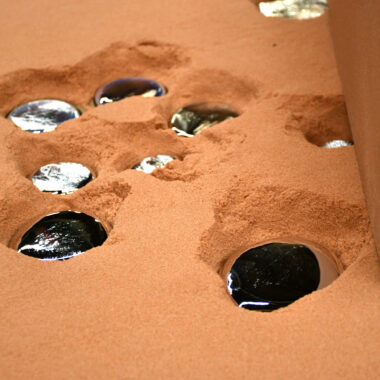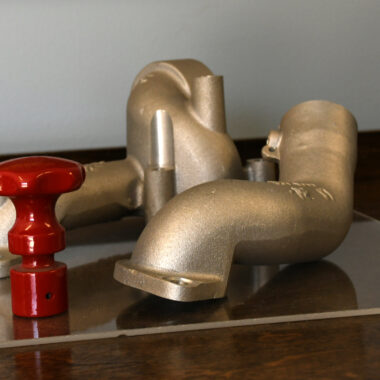Attain Excellence: Navigating in Casting Aluminum Illinois
Attain Excellence: Navigating in Casting Aluminum Illinois
Blog Article
Accuracy and Excellence: Ideal Practices for Effective Aluminum Spreading
In the world of aluminum casting, achieving accuracy and perfection is not simply a goal but a criterion that identifies quality. The careful process of light weight aluminum spreading needs interest to detail at every phase, from material selection to final finishing touches.
Product Option
When taking into consideration material option for aluminum casting processes, toughness, and warmth resistance are extremely important aspects to examine,. Aluminum alloys offer a vast range of options, each with special buildings that can considerably influence the top quality and efficiency of the last casted item. One common choice is the 356 alloy, recognized for its excellent fluidness and resistance to rust, making it ideal for a variety of applications. For high-stress settings requiring exceptional toughness, the 7075 alloy stands apart due to its high strength-to-weight proportion. Furthermore, the 6061 alloy is favored for its excellent weldability and formability, making it a versatile choice for intricate styles.
In the choice process, it is vital to take into consideration not only the mechanical homes of the alloy however also its thermal features. Warm resistance is important to guarantee that the casted component can endure the temperatures it will be revealed to throughout procedure without jeopardizing its structural integrity. By very carefully evaluating the resilience and warm resistance of various aluminum alloys, makers can make enlightened decisions that lead to top notch, dependable casted products.
Mold And Mildew Style
In the realm of aluminum casting finest techniques, an indispensable aspect that considerably affects the end product's top quality and stability is the careful design of the mold and mildew. Mold design plays a crucial duty in identifying the dimensional precision, surface finish, and general intricacy of the cast aluminum component. When creating a mold and mildew for light weight aluminum spreading, a number of essential factors need to be thought about to ensure ideal results.
Firstly, the mold design should represent the material circulation characteristics of molten light weight aluminum to avoid flaws such as contraction, porosity, or misruns. Proper gating and riser placement are crucial components in the mold design process to promote smooth steel flow and decrease the formation of air pockets.
Furthermore, the mold style should consider the air conditioning rate of the light weight aluminum to avoid breaking or distortion during solidification. Sufficient airing vent and cooling networks within the mold can aid regulate the temperature level distribution and promote consistent solidification of the steel.
Refine Optimization
To improve efficiency and high quality in light weight aluminum spreading, process optimization plays a pivotal duty in making best use of and enhancing procedures output. By fine-tuning each action of the spreading procedure, makers can determine bottlenecks, lower waste, and improve general performance.
Moreover, executing lean production concepts can even more enhance procedure optimization in aluminum spreading. By removing non-value-added activities and focusing on constant improvement, makers can attain higher effectiveness levels and better source application. In addition, regular surveillance and evaluation of vital performance signs (KPIs) aid in recognizing areas for improvement and making data-driven decisions to maximize the casting process continually.
Quality Assurance
Process optimization in aluminum casting not only improves you could try this out performance and productivity yet likewise lays the structure for stringent quality assurance procedures to promote sector standards. Quality assurance is extremely important in ensuring that final aluminum castings meet the called for specifications and performance standards. Executing an extensive quality assurance procedure includes various steps, starting from the preliminary style stage via to the final examination of the cast components.

Furthermore, developing clear quality assurance procedures and paperwork treatments is important for tracking and keeping track of the casting process. By maintaining comprehensive records of production parameters, testing results, and examination records, suppliers can guarantee uniformity and traceability in their aluminum casting procedures. Sticking to rigorous quality assurance methods not only enhances the overall integrity of light weight aluminum castings but also imparts self-confidence in customers concerning the quality of the end products.
Finishing Techniques
Just how can light weight aluminum casting be improved via careful application of ending up strategies? Completing methods play an important duty in boosting the top quality and aesthetic appeals of aluminum castings. Among the primary techniques employed is surface smoothing, which includes the elimination of any type of flaws or rough sides to attain a flawless coating. This process not just enhances the visual allure of the spreading yet likewise enhances its total capability by ensuring uniformity and precision.

In addition, methods like powder find layer or painting find this can be applied to aluminum castings to supply both visual allure and additional security against ecological factors. By thoroughly choosing and using the ideal ending up techniques, makers can make certain that their light weight aluminum spreadings satisfy the highest possible criteria of top quality and performance.
Final Thought
Finally, effective light weight aluminum casting calls for precision and excellence in product choice, mold style, procedure optimization, top quality control, and ending up strategies. By following finest practices in each of these locations, suppliers can guarantee top quality and consistent results in their aluminum casting processes. casting aluminum illinois. It is necessary to take notice of every information and continuously strive for enhancement to attain optimum results in light weight aluminum spreading
The careful procedure of aluminum spreading needs attention to detail at every stage, from material selection to final ending up touches.To improve performance and top quality in light weight aluminum casting, process optimization plays a pivotal role in optimizing and enhancing operations result.Refine optimization in light weight aluminum spreading not only improves efficiency and performance but additionally lays the structure for rigid top quality control actions to promote industry criteria.One crucial facet of top quality control in aluminum spreading is the usage of sophisticated testing techniques to evaluate the stability and buildings of the spreadings.In conclusion, successful light weight aluminum spreading requires precision and perfection in material selection, mold style, procedure optimization, quality control, and completing techniques.
Report this page